Showing 1051–1060 of 1094 results
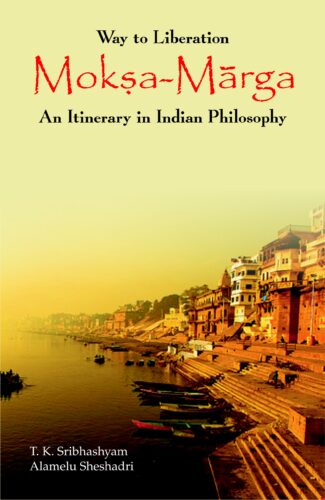
The book projects light on concept of contemplation and meditation, including meditation techniques and practices, which is central to the attainment of moksha. It also explains meaning of love, devotion, religion, the body-soul relation and the three yogas understanding of which is essential to attain moksha.
The way to liberation or moksha needs perfect knowledge, perfect action and perfect surrender to the Lord. The bhakta becomes a bhagavata as he not only knows and sees but also lives as a servant of God. Moksha is the final approach to the purity and perfection of the human soul. This volume attempts an in-depth study of the concept of liberation or moksha and the way to attain it.
The book begins with the meaning of love, devotion, religion, the body-soul relation and the three yogas, an understanding of which is essential to understand the concept of moksha. In this context, it delves into the meaning of the Brahman, the Absolute, as conveyed in the Vedas and other religious works like the Upanishads and the Bhagavad-Gita, the concept of the universal spiritual entity of Sarveshvara, concepts of sin and virtue, and even the principles of monotheism and polytheism in Hinduism. Quoting from the scriptures and other relevant texts, it emphasises on the notion of devotion and its benefits to examine the means to self-realisation and liberation and includes a study of the concept of contemplation and meditation, including meditation techniques and practices, which is central to the attainment of moksha.
With interesting illustrations, the volume will be useful to religious scholars and students and seekers on the path of spiritual fulfilment.
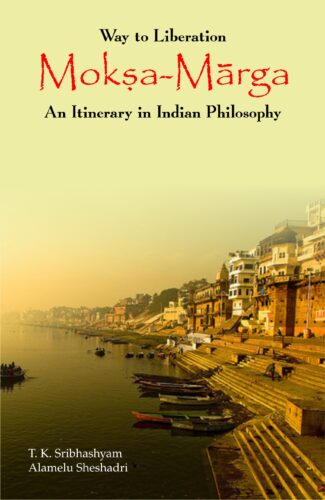
The book projects light on concept of contemplation and meditation, including meditation techniques and practices, which is central to the attainment of moksha. It also explains meaning of love, devotion, religion, the body-soul relation and the three yogas understanding of which is essential to attain moksha.
The way to liberation or moksha needs perfect knowledge, perfect action and perfect surrender to the Lord. The bhakta becomes a bhagavata as he not only knows and sees but also lives as a servant of God. Moksha is the final approach to the purity and perfection of the human soul. This volume attempts an in-depth study of the concept of liberation or moksha and the way to attain it.
The book begins with the meaning of love, devotion, religion, the body-soul relation and the three yogas, an understanding of which is essential to understand the concept of moksha. In this context, it delves into the meaning of the Brahman, the Absolute, as conveyed in the Vedas and other religious works like the Upanishads and the Bhagavad-Gita, the concept of the universal spiritual entity of Sarveshvara, concepts of sin and virtue, and even the principles of monotheism and polytheism in Hinduism. Quoting from the scriptures and other relevant texts, it emphasises on the notion of devotion and its benefits to examine the means to self-realisation and liberation and includes a study of the concept of contemplation and meditation, including meditation techniques and practices, which is central to the attainment of moksha.
With interesting illustrations, the volume will be useful to religious scholars and students and seekers on the path of spiritual fulfilment.

How can we understand the Hindu tradition as alive today? That is the question which this book investigates. It asks for a broader understanding of history, rightful accounting of the Vedas and of other oral learnings. The goal of truth is sought by approaching different personalities and institutions of culture.
In India, there has long been a tendency to emphasize the spoken word which is passed on alive from an individual teacher to each individual student. But, through the development of modern media, more use is now made of the written word which records information externally, in institutions that have been industrially, socially and culturally organized. How then can we understand the Hindu tradition as alive today with its ancient emphasis upon the spoken word and the living individual? That is the question which this book investigates. Accordingly, it asks for a broader understanding of history, which would allow for a rightful accounting of the Vedas and of other oral learning. Through its continued emphasis upon the living word, the Hindu tradition asks for a deeper understanding of reasoned enquiry. Such reasons do not work primarily through mechanical instruments in the restricted way that modern physics does. Instead, it works essentially through a reflective investigation of our living faculties, which are thus cultivated and clarified. The goal of truth is not here sought through an institutional consensus; but rather as a common ground, which is approached quite differently through different personalities and institutions of culture.

Writing in a simple language, Prof. D. L. Johnson acquaints Asian readers with the traditional ideas and values that have shaped the culture of the western world over centuries, mainly dominant thinkers and ideas of classical Greece and Rome and religious traditions of the Jews and the Christians.
This book acquaints Asian readers with traditional ideas and values that have shaped the culture of the Western world over centuries. Written in simple language, it throws light on dominant thinkers and ideas of classical Greece and Rome as well as the religious traditions of Jews and Christians. Greek mythology, Greek epic literature and drama are included in the survey. The impact of Greek philosophy in moulding of Western thought as well as the Roman interpretations of Greek philosophy are included. The history of Jewish and Christian interpretations of god and the human predicament are explained with clarity and compared and contrasted with Asian ideas. Special attention is given to controversial ideas which often confuse Asian readers, as for instance the Jewish and Christian assertion of their ideas as truth claims. The book will be useful to scholars of Asia as well as to general readers and students keen on understanding the sources of Western culture and its appeal today.
Lord Buddha, in his profound wisdom, said that for extinction of human suffering, complete annihilation of desire is the only way. This is the sacred truth of suffering.
Acarya Carvaka, equally profound in his thinking, said that life is a continuous celebration of desire. Kama (desire) and artha (wealth) are the only true goals of life. Beg, steal or borrow, but live life like a king. Enjoy life full as long as one is alive.
Who is correct? Lord Buddha or Acarya Carvaka? What is desire really meant to Indian society, religion and culture through ages?
The book tries to address these and similar questions objectively and diligently.
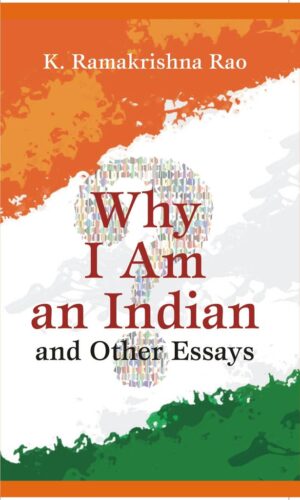
This volume reflects the evolution and growth of Prof. K. Ramakrishna Raos thought and the different dimensions and shades of his academic pursuits, ranging from Gandhis thought to consciousness studies, educational issues, identity problems, parapsychology, and Indian psychology in general and yoga in particular.
This volume reflects the evolution and growth of Prof. K. Ramakrishna Raos thought and the different dimensions and shades of his academic pursuits, ranging from Gandhis thought to consciousness studies, educational issues, identity problems, parapsychology, and Indian psychology in general and yoga in particular.
While the topics covered appear to be very diverse and quite divergent, there is a common thread knitting them together; the thread is that the material covered is concerned with human nature. The crucial aspect of each of us is identity, which bestows on us individuality and separateness. It has its advantages and entails some problems as well. This book reflects on them from different perspectives, focusing mainly on the philosophical and psychological aspects in human functioning, and ones identity and unity with others.
Man is conceived as a composite of body, mind and consciousness. The discussion of these concepts hopefully sheds light directly or indirectly on the multiple problems concerning human nature and the associated difficulties in chasing them in real life and especially in ones academic pursuits.
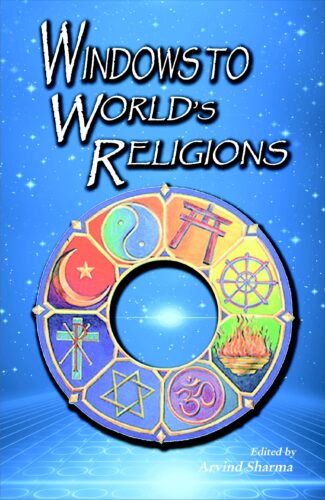
A selection of papers presented at a global congress on World’s Religions after September 11, stressing the need for various religions to develop a better understanding of each other. The papers deal with Islamic, Christian, Bahai, Sikh, Primal and Hindu religious traditions and beliefs.
The volume is concerned with the role of religion in the present day. Presenting proceedings of a global Congress on Worlds Religions after September 11 held in September 2006 at Montreal, Canada, it stresses the need for interfaith friendships to develop understanding between faiths and remove stereotypes that have emerged concerning religious beliefs and their followers. Examining the thoughts of Western theologians and others on the role of religion, it discusses spirituality as being at the root of tolerance. The papers refer to Islamic, Christian Mennonite, Bahzi, Sikh and Hindu religious traditions and beliefs but bear specific reference to the North American Roman Catholic Retreat Centre at Pembroke, Ontario, Canada. They engage in examining specific topics pertaining to the different religious faiths and traditions. They examine the life of Guru Arjan Dev and his message and its significance today, the work of Mira Behn towards conserving the environment of the Himalayas, and the indigenous Australian Christian womens perception. The book provides a glimpse into the life, work and experiences of the spiritual women of Ramanashrama at Tiruvannamalai in Tamil Nadu and Ramanas views on womans right to spirituality, asceticism and salvation. It showcases the contribution of the Inter-religious Council of Central New York towards bringing people of different faiths and cultures into situations of mutual respect and trust. The volume includes the text of the Universal Declaration of Human Rights.
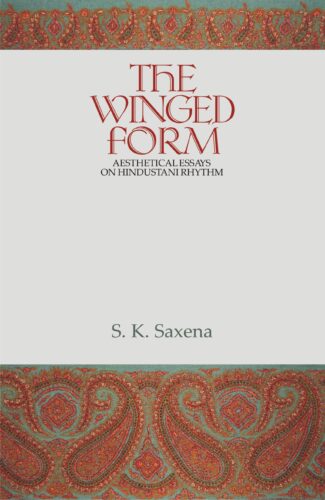
This collection of essays is a pioneering attempt to look at Hindustani rhythm from the viewpoint of the contemporary Western aesthetics, as also to weigh this aesthetics against the theory and practice of rhythm as it permeates and determines the music and Kathak dance of north India. (46 words)
This collection of essays, a thoroughly revised and enlarged version of its first earlier edition (1979), is a pioneering treatment of the Hindustani rhythm in the way of contemporary (Western) aesthetics. It seeks, on the one hand, to determine and distinguish the meaning of such key words as laya, matra, bol, theka, sama, and layakari, and, on the other hand, to seize the details and aesthetic semblances of live rhythm as they appear to contemplation.
Some wider aesthetical questions have also been addressed in this book. How, if at all, can rhythm be regarded as an autonomous art? What are the elements of its winged form, and how can it yet appear steadfast and virtually motionless? Is it proper to speak of the art of rhythm as symbolic in its significance or as expressive in some distinctive way? Or, can it be said to embody what it signifies?
Insofar as rhythm is fast becoming a vital subject of aesthetic reflection in the West today, the book also seeks to weigh the conflicting views of two modern aestheticians, Susanne K. Langer and Philip Alperson, against the theory and practice of Hindustani rhythm.
Every lover of this specific genre of rhythm stands to benefit from a reading of this book. It would prove to be of value also to those who are interested in Kathak dance, for no other classical dance of India depends so manifestly on rhythm.
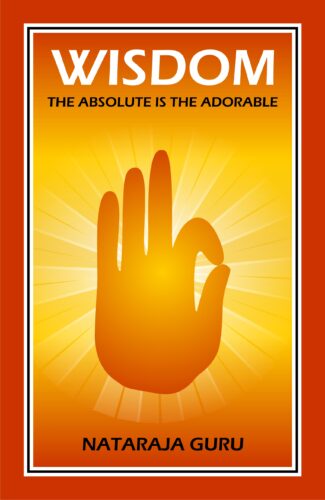
This innovative elucidation charts out the structural map of wisdom the finalised knowledge concerning life in its generic and specific aspects. It encompasses the entire range of human wisdom including epistemology, axiology, politics and mysticism.
This strikingly innovative elucidation charts out the structural map of wisdom the finalised knowledge concerning life, both in its generic and specific aspects. Nataraja Guru, the eminent contemporary thinker, handles the theme as well as the methodology in a very original way. Thematically it encom-passes the entire range of human wisdom, including epistemology, axiology, mathematics, sociology, politics and mysticism. The author presents a scheme of coherent pattern in which all distinctions between contemplative and active, functional and theoretical, contingent and necessary, Eastern and Western dissolve into the unity of the Absolute Truth. The subject-matter and object-matter of wisdom when put in proper perspective around the normative notion of the Absolute, culminate in the idea of common human happiness. In the age of excessive specialization and compart-mentalization, Nataraja Gurus handling of the subject matter is a unique response to the legitimate cry for unification and integration. The methodology adopted throughout this interpretation is unitively taking care of the vertical progress of human wisdom along with the horizontal process of adjustment with the incidental necessities that are demanded by the process. Nataraja Gurus insightful combination of the spiritual with the modem science stands out as a tall land-mark in the field of contemporary wisdom and scholar-ship. It is a powerful beacon to the solace-seeking mankind that is being tortured by the outrageously materialistic society.

The philosophy of Wittgenstein and the Advaita Vedanta philosophy are two philosophical traditions far apart in time and cultural space yet they possess striking similarities. This volume painstakingly researches Wittgenstein’s works and the basic texts of Vedanta, the Upanishads, the Brahmasutra and the Bhagavad-Gita, delving deep into their similarities.
The philosophy of Wittgenstein and the Advaita Vedanta philosophy are two philosophical traditions far apart in time and cultural space yet they possess striking similarities. This painstaking research carried out with a rare thoroughness by an erudite scholar, Ravindra K. S. Choudhary, shows that there are illumi-nating parallels between them even while recognizing their legitimate differences. The work argues that though Advaita Vedanta did not exert a direct influence over Wittgenstein, the philosopher owes much to Schopenhauer who was a great admirer of the Upanishads. Examining a variety of Wittgenstein’s works earlier as well as later and the basic texts of Vedanta, the Upanishads, the Brahmasutra and the Bhagavad-Gita, along with Shankara’s interpretations of them, it delves into their similarities vis a vis the question of reality, the realm of value and some central issues of ethics and religion. It observes that, for instance, Wittgenstein’s notion of the mystical (das Mystische) is similar to the Advaitic view of Brahman. For both, the matters of value have a higher or transcendental level as distinct from the world of facts. Wittgenstein’s idea of a good or happy life is very close to the Vedantic ideals of jivanmukti as well. The work goes on to show that the Vedantic parallels of Wittgenstein’s philosophy persists in distinctive ways from the Tractatus to his last writings. The volume reveals a fresh approach in the field of comparative philosophy. The volume will benefit all those concerned with the discipline of philosophy, Indian or Western.
| There are no products |